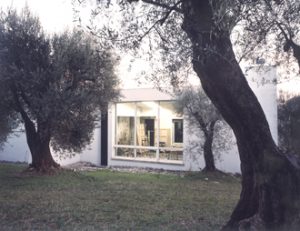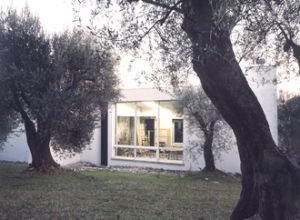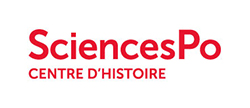
And what if art were capable of implementing democracy? That is the wager laid down by the New Patrons, who open thereby a new chapter in the history of art. The instigator is François Hers, who has been the initiator of many other transformations, such as participating in the creation of Viva photo news agency in 1972 and heading the photography mission of DATAR—the French Inter-ministerial delegation for territorial development and regional attractiveness— at the request of Bernard Latarjet back in the 1980s.
Starting from the assumption that the artist has been vested with a series of missions over the course of time before being expected to be the embodiment of political truth, both present and future, at the time when democracy was invented in the nineteenth century, Hers raises the issue of the current status of the artist in a world where individual freedom has triumphed without it leading to a satisfactory renewal of the artist’s social contract. It is in the democratic patron (potentially, us all) that Hers sees the salvation of art and of the artist in search of a new role within public debates. It is in this shared artwork, whose forms are ever to be reinvented, that Hers sees a more audacious and more harmonious social contract taking shape in the future.
Laurence Bertrand Dorléac
Watershed Moment
François Hers
“We have never been modern,”[ref]Bruno Latour, We Have Never Been Modern (1991), trans. Catherine Porter (Cambridge, MA: Harvard University Press, 1993).[/ref] as a famous anthropologist has remarked, and this statement can be confirmed, as it is particularly true in art.
Of course, artists and their works have been modern—to the point of becoming emblematic of this modernity—but not their society. That society has remained silent. In art, it has been satisfied with anonymous relationships established by institutions and markets. It has confined art works to the role of “cultural heritage” objects and has bestowed upon works from the past an importance wholly unprecedented in history. Whereas this society can pride itself on having achieved one of the most significant modern revolutions—the invention of democracy—its members have not always assumed the role this political ambition has laid down for them: that of no longer being mere spectators to, or the rejects of, a history that goes beyond them but being, rather, its very agents. Now, in art, we have remained under the Ancien Régime. And this is all the more astonishing as, since Renaissance times, our society has expected artists to be the paragons of another extraordinarily audacious ambition—the invention of individuality.
To make up for this absence, how many paths have been explored by modern artists as ways of putting art into life or of finding alternatives to the commercial system? How much money has been spent by donors or political representatives in order to democratize culture? What strategy has not been deployed to this end by cultural institutions? How many intellectuals have issued recommendations or launched into diatribes that can nothing, for nothing could be changed in ignoring, or taking the place of the person who is at the center of the political project and who holds the key? To exit from this dead end, what has prevented us from having the political courage to dare to imagine that, with the advent of democracy, the citizen had become the artist’s equal and that he, too, had gained the authority to speak publicly of the need for art and of the need to judge whether a work of art could claim this title? Why has this wild dream of participation been maintained for so long, whereas, in actuality, the citizen is never a decision-maker but only the beneficiary, when not manipulated with the very best of intentions?
In any case, it seems that the time has come for our society to assume its responsibilities. We must stop thinking that, in the name of universal suffrage, established financial power, or some kind of education, one has authority to decide on what must be done and to think in the place of the one who is absent. The only remaining reason for the continuing existence of such an illusion is to reinforce one’s own narcissism. An illusion of this sort lends no credibility to the representativeness of politicians and it prevents art from assuming once again the role of motive force of history that was and should remain its own, that is: of rendering visible a collective ambition. For, the work to be created is also the work of a lovely exercise in democracy, beyond giving shape to what each can live in the here and now.
In writing one of the richest periods in the history of art, modern artists have assumed their responsibilities in full. Expecting them to continue to play the role of a solitary individual hero has nonetheless lost all appearance of common sense. Because the very logic of their actions leads them to promote that role, there is still something in it only for the markets and show business, whose criteria and values are designed to make up for the absence of a policy that would be capable of making a form of art emerge from democracy. This “cowboy hero” figure of modernity has played itself out, and it is fruitless to expect that the artist might take up alone the most significant cultural challenge with which we are now all faced and with which we will continue to be faced for a long time to come: How is one to make a society out of individuals who have become free and autonomous and who have different conceptions and convictions?
Whatever the case might be, an answer has been found in the form of a New Patrons Protocol.[ref]The how and why of this New Patrons Protocol is presented in the work L’art sans le capitalisme (French edition); Art Without Capitalism (English-language edition) by François Hers and Xavier Douroux (Dijon: Les presses du Réel, 2012).[/ref] This Protocol creates a new context within which the advances of art and those of democracy become interdependent. It allows one to act on an arts scene beyond its walls, erected at any point of a territory and open to whoever wishes to assume the responsibility of being an active agent. Its implementation has now proved that it is really in this absent citizen, as much as among artists, that one can find the intelligence and the courage to bring out the cultural needs of the age as well as the capacity to draw out the appropriate conclusions by acting together. It has also proved that involvement on the part of an institution that is representative of this society and the commitment of independent mediators [ref]We are speaking here about the Foundation de France and of a network of European mediators. For more information, see: www.newpatrons.eu or www.nouveauxcommanditaires.eu [/ref] are decisive factors for achieving the transition from a utopia offered by an artist to a reality that can no longer be ignored. Their respective contributions allow one to give substance to this absent person without weakening the exigencies of contemporary artistic creativity and without scaling down the singular qualities of each participant. Quite to the contrary, it is in assuming their primary responsibilities within the framework of this Protocol that all concerned agents give a common meaning to their individual commitment as well as to the art work itself: the citizen, who expresses a need for creation and takes on the role of commissioning the work; the artist, who invents the appropriate forms; the elected officials and sponsors, with their intermediate groups that ensure political mediation and the financing; the intellectuals, who develop collective intelligence; and, finally, this new character of artistic mediator, who directs the negotiations among the parties and brings in the forms of knowledge required for action.
While it has thus been established that awareness of the role of art and of the changes currently taking place is broadly shared and while it has also become abundantly clear that, henceforth, the number of people wishing to take action has no other limits than the means a society decides to devote to them, that is not enough. Nor does it suffice that one is now able to point to the example of hundreds of impressive productions executed throughout Europe. What, then, is needed for this New Patrons Protocol to become the central axis for a major public policy that has been freed from historically inherited prejudices and that privileges, finally, the creative work, as during all great ages of change that have preceded our own? Of course, bringing a still pubescent democracy to maturity demands acceptance that freedom of initiative, negotiated among all those whom it concerns, would be preferable to gestures of authority. Likewise, one must not be afraid to wager on a sense of confidence as a way of reaching understanding rather than on a continual development of regulations and controls, whose deleterious effects on people’s urges to make and do things are well known. But here we have a choice, and it is up to each person to make it, or not!
François Hers, artiste. Il réalise en 1965 sa première oeuvre dans laquelle il fait intervenir ses destinataires. Il est co-fondateur, en 1972, de la coopérative de photographes Viva. Il publie Intérieurs (Archives d’architecture moderne à Bruxelles) en 1981 ; en 1983, Récit (Lebeer-Hossmann) et A tale (Thames & Hudson) ; en 2001, Le Protocole (Presses du réel) ; en 2012, L’art sans le capitalisme avec Xavier Douroux (Presses du réel). En 1983, il conçoit et dirige la mission photographique de la DATAR pour le compte de cette administration. En1990, il conçoit le Protocole des Nouveaux commanditaires – New patrons que la Fondation de France décide de mettre en œuvre en France puis en Europe. Il dirige la Fondation Hartung-Bergman depuis 1994 et en fait un lieu de rencontre et de recherche en histoire de l’art.

